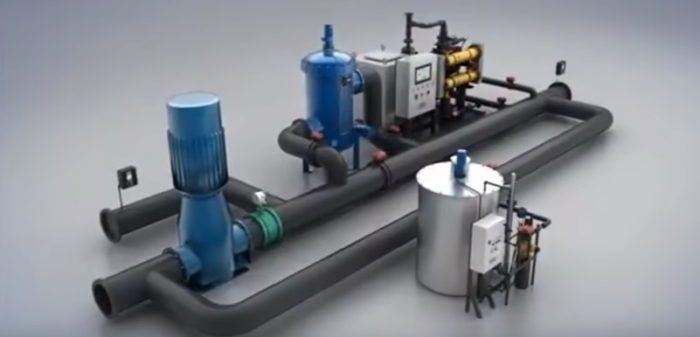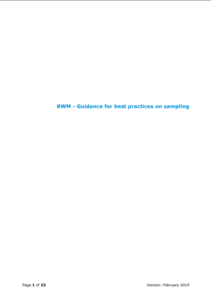EMSA published a document focusing on Ballast Water Management and Guidance for best practices on sampling. The paper aims to provide guidance for a harmonised approach to ballast water sampling procedures, looking for the ideal practise based on the different types, D-1, D-2 for ascertaining the compliance with the Ballast Water Convention.
Specifically, the International Convention for the Control and Management of Ships’ Ballast Water and Sediments, 2004 is a treaty adopted by the IMO in order to help prevent the spread of potentially harmful aquatic organisms and pathogens in ships’ ballast water.
Generally, the Convention applies to:
- Ships entitled to fly the flag of a Party (States that have been ratified the Convention);
- Ships not entitled to fly the flag of a Party but which operate under the authority of a Party.
EMSA’s guide focuses on documentation needed in order to establish whether a ship is in compliance with the requirements of the Convention.
The Convention highlights that the vessels are required to manage their ballast water and sediments according to a certain standard:
- Regulation D-1 establishes the standards for the water exchange;
- Regulation D-2 sets the standard for the performance of the ballast water system.
Concerning sampling, it should be no more stringent that what is required for type approval of ballast water management systems. The sampling process has many different approaches in the sampling processes influence the results regarding organism concentrations.
The sampling method should be carefully done, as the organisms in the discharge are affected by the sampling method. Consequently, opting for the ‘wrong’ sampling, may affect the compliance control result if the organisms are underestimated and the a faulty BWTS could be recognised as compliant.
On the contrary, there’s a chance that the organisms are overestimated.
According to IMO, the principles of sampling are:
- the sampling protocol should be in line with IMO G2 Guidelines;
- the sampling protocol should result in samples that are representative of the whole discharge of ballast water from any single tank or any combination of tanks being discharged;
- he sampling protocol should take account of the potential for a suspended sediment load in the discharge to affect sample results;
- the sampling protocol should provide for samples to be taken at appropriate discharge points, if possible;
- the quantity and quality of samples taken should be sufficient to demonstrate whether the ballast water being discharged meets with the relevant standard;
- sampling should be undertaken in a safe and practical manner;
- samples should be concentrated to a manageable size;
- samples should be taken, sealed and stored to ensure that they can be used to test for compliance with the Convention;
- samples should be fully analysed within test method holding time limit using an accredited laboratory which apply quality management system practices in accordance with EN ISO/IEC-17025 or other equivalent standards accepted at international level;
- samples should be transported, handled and stored with the consideration of the chain of custody.
In addition, the first premise of any sampling is to identify the purpose of the sampling, whether the ballast water management system of the ship is meeting the D-1 standard or the D-2 standard.
Also, the samples could be taken from the discharge line or directly from ballast water tanks.
In its guide, EMSA, divided sampling for compliance with regulation D1 standard and regulation D2 standard.
Concluding, the document further focuses on the sampling collection, the process, sampling from the ballast water tanks and the preservation of the samples.
For more detailed information of sampling, click the PDF herebelow.































































